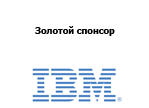Program Committee has the right to reject without consideration the papers which aren't conforming to requirements described in this section.
The following types of the scientific work are acceptable at the conference:
Articles are accepted in MS Word or LaTeX2e (MiKTeX2.4 package is recommended).
When formatting in LaTeX2e environment please use the pavt.sty style file. Figures should be submitted in eps format in this case.
Article is submitted only in the digital form through the "Paper" section. Archive *.zip file should contain:
Poster (one A4 page long) contains information about plans and initial results of recently started scientific research.
The structure of the article. The submitted article should have the following structure:
List of authors appears in 12 pt Times New Roman with center alignment and is separated from the title by a single blank line with 16 pt size. Authors are listed through commas, initials are written before the last name.
Organization has 12 pt Times New Roman font with center alignment and is separated from the list of authors by one blank line with 6 pt size. Please specify the full name of the organization where the authors work. If the authors work in different organizations you can list two or more organizations through commas. In this case author's affiliation is identified by the footnote.
Summary is separated by a single blank line with 16 pt size above and below. Left and right margins are of 15 mm width. Summary is formatted as justified text with 10 pt Times New Roman font. The title "Summary" is not written at the beginning of the annotation. Summary is presented as a single paragraph without special indent. There is no summary in posters.
Main text of the article has 11 pt Times New Roman font with auto hyphenation. Each paragraph has justified alignment, single line spacing and no spacing before and after the rest of the text. Paragraphs begin with the 7 mm first line indent.
Three levels of headings are allowed. They have left alignment and are separated by a single blank line with 11 pt font from the main text. There is no final point after the heading title.
First level heading is typed in bold 14 pt Times New Roman font. It is numbered with Arabic numerals followed by the point, e.g. "1.".
Second level heading has bold 12 pt Times New Roman font. It is numbered with Arabic numerals, e.g. "2.1". There is no final point.
Third level heading appears in italic 12 pt Times New Roman font. It is numbered with Arabic numerals, e.g. "3.1.2". There is no final point.
Source code is formatted using Courier New font of 10 pt size.
Statements, lemmas and theorems are typed as separate paragraphs and are numbered in the order they appear in the text, starting with the number one.
Figures and tables. Every figure and table should have a caption. Figure caption is of 10 pt font with 6 points before and after spacing and begins with the bold keyword "Fig. <Figure number>." that places under the image. Please do not use color drawings. Table caption is typed in 10 pt font with 6 points before and after spacing and begins with the bold keyword "Table <table number>. " that places above the table.
Cross-references and footnotes. Footnotes are typed in 10 pt font with justified alignment and Arabic numerals numbering and are placed at the bottom of the page. Links to grants are formatted as footnotes to the title of the article and are marked by *. Cross-references are separated by square brackets and are listed in ascending order through commas and dashes, e.g. "[1], [2, 4, 7], [3–9], [1, 3–9]."
List of references begins with the word "References" that is typed as a first level heading without numbering. List items have 11 pt Times New Roman font with left alignment and Arabic numbering, e.g. "1.".
Authors may use the following templates to speed up the process of formatting.





















